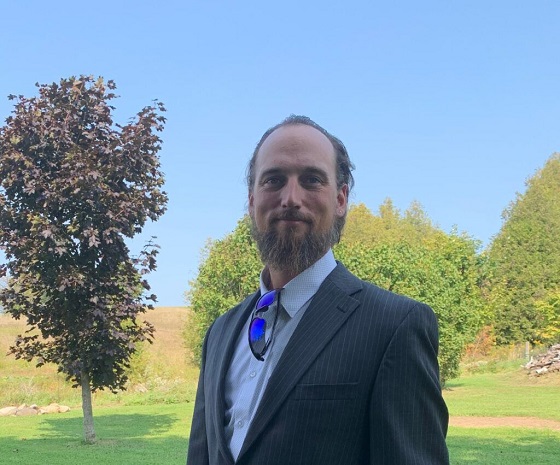COVID-19
How far is too far? How much is too much? The role of reason in pandemic control

How far is too far????
I have been watching with interest the great extremes Canadian municipalities have gone to in the great cause of ‘protecting’ Canadians.
While I do not deny the devastating effects of Covid 19 on those who are most vulnerable to its potential respiratory destruction, nor the basket of symptoms from fever to loss of taste, I am incredibly cynical of the extremism displayed in measures enacted by governmental bodies in each province!
The level of care exhibited by medical and health care professionals is awe inspiring, so much so that those in the medical front lines have bee publicly lauded and thanked, though probably not enough.
Those who are working in what is deemed essential services have been exemplary as well-grocery stores, drug stores and other retail outlets with goods necessary for survival.
Firstly, I have to question a few things. How was the list of essential services arrived at? And more importantly, what makes a church NON ESSENTIAL when a liquor store is still open? Spiritual care is far more long lasting (eternal) and beneficial to mental and family health than a retail outlet whose products, if mis used for self medication has led to destruction of marriages and incredible social destruction?
Secondly, if we are looking to banning activities with an eye to public safety, why is going to busy retail outlets deemed ‘safe’ when activities conducted outdoors, like going to parks or playgrounds are not safe or recommended.
It would make sense to me that any activity that occurs where there are few people, or protection via real glass or real distance, like camping and fishing or walking amidst our many parks and dog walk areas would be encouraged as opposed to being banned.
If anyone has gone into a Walmart or Superstore, and they are vulnerable or not necessarily well, the close contact with other shoppers accidental or on purpose, clearly does not fall under the no-contact or isolation recommendations.
Thirdly, if we, as a country are concerned about keeping people employed, why is there not a protocol in place to allow healthy workers to return to their employment to keep our economy going instead of keeping the 90 plus percent home and allowing our businesses to stagnate or potentially close? Why don’t we keep the vulnerable and symptom exhibiting Canadians home?
If anyone has been traveling, stay home.
With the isolation order and economic shut down in place, all of Canada is being considered guilty (carrier or ill with symptoms) instead of innocent (healthy) first!
Fourthly, where is our national, provincial and local leadership? With our national health spokesperson telling us to stay home for everyone’s protection, where is the voice of leadership that looks at this with a voice of reason and balance? One that provides guidance and humility that says, we can’t handle this on our own without REASON and without fear?
We also need to realize that without spiritual leaders coming to the forefront and providing calm, spiritually based principles for coping in this time where fear is the common currency and panic is the common denominator amongst communities.
In truth, science alone will not help us through this crisis, but rather a balanced approach that recognizes the sovereignty of God in our lives will take us through this. We need leaders who publicly espouse faith and humility, not a changing narrative in science that is being questioned worldwide.
Let us pray that the voice of reason and faith is louder than the cries of fear in our nation.
COVID-19
Court compels RCMP and TD Bank to hand over records related to freezing of peaceful protestor’s bank accounts

The Justice Centre for Constitutional Freedoms announces that a judge of the Ontario Court of Justice has ordered the RCMP and TD Bank to produce records relating to the freezing of Mr. Evan Blackman’s bank accounts during the 2022 Freedom Convoy protest.
Mr. Blackman was arrested in downtown Ottawa on February 18, 2022, during the federal government’s unprecedented use of the Emergencies Act. He was charged with mischief and obstruction, but he was acquitted of these charges at trial in October 2023.
However, the Crown appealed Mr. Blackman’s acquittal in 2024, and a new trial is scheduled to begin on August 14, 2025.
Mr. Blackman is seeking the records concerning the freezing of his bank accounts to support an application under the Charter at his upcoming retrial.
His lawyers plan to argue that the freezing of his bank accounts was a serious violation of his rights, and are asking the court to stay the case accordingly.
“The freezing of Mr. Blackman’s bank accounts was an extreme overreach on the part of the police and the federal government,” says constitutional lawyer Chris Fleury.
“These records will hopefully reveal exactly how and why Mr. Blackman’s accounts were frozen,” he says.
Mr. Blackman agreed, saying, “I’m delighted that we will finally get records that may reveal why my bank accounts were frozen.”
This ruling marks a significant step in what is believed to be the first criminal case in Canada involving a proposed Charter application based on the freezing of personal bank accounts under the Emergencies Act.
Alberta
COVID mandates protester in Canada released on bail after over 2 years in jail

Chris Carbert (right) and Anthony Olienick, two of the Coutts Four were jailed for over two years for mischief and unlawful possession of a firearm for a dangerous purpose.
From LifeSiteNews
The “Coutts Four” were painted as dangerous terrorists and their arrest was used as justification for the invocation of the Emergencies Act by the Trudeau government, which allowed it to use draconian measures to end both the Coutts blockade and the much larger Freedom Convoy
COVID protestor Chris Carbert has been granted bail pending his appeal after spending over two years in prison.
On June 30, Alberta Court of Appeal Justice Jo-Anne Strekaf ordered the release of Chris Carbert pending his appeal of charges of mischief and weapons offenses stemming from the Coutts border blockade, which protested COVID mandates in 2022.
“[Carbert] has demonstrated that there is no substantial likelihood that he will commit a criminal offence or interfere with the administration of justice if released from detention pending the hearing of his appeals,” Strekaf ruled.
“If the applicant and the Crown are able to agree upon a release plan and draft order to propose to the court, that is to be submitted by July 14,” she continued.
Carbert’s appeal is expected to be heard in September. So far, Carbert has spent over two years in prison, when he was charged with conspiracy to commit murder during the protest in Coutts, which ran parallel to but was not officially affiliated with the Freedom Convoy taking place in Ottawa.
Later, he was acquitted of the conspiracy to commit murder charge but still found guilty of the lesser charges of unlawful possession of a firearm for a dangerous purpose and mischief over $5,000.
In September 2024, Chris Carbert was sentenced to six and a half years for his role in the protest. However, he is not expected to serve his full sentence, as he was issued four years of credit for time already served. Carbert is also prohibited from owning firearms for life and required to provide a DNA sample.
Carbert was arrested alongside Anthony Olienick, Christopher Lysak and Jerry Morin, with the latter two pleading guilty to lesser charges to avoid trial. At the time, the “Coutts Four” were painted as dangerous terrorists and their arrest was used as justification for the invocation of the Emergencies Act by the Trudeau government, which allowed it to use draconian measures to end both the Coutts blockade and the much larger Freedom Convoy occurring thousands of kilometers away in Ottawa.
Under the Emergency Act (EA), the Liberal government froze the bank accounts of Canadians who donated to the Freedom Convoy. Trudeau revoked the EA on February 23 after the protesters had been cleared out. At the time, seven of Canada’s 10 provinces opposed Trudeau’s use of the EA.
Since then, Federal Court Justice Richard Mosley ruled that Trudeau was “not justified” in invoking the Emergencies Act, a decision that the federal government is appealing.
-

 Agriculture2 days ago
Agriculture2 days agoCanada’s supply management system is failing consumers
-

 Economy2 days ago
Economy2 days agoTrump opens door to Iranian oil exports
-

 Alberta1 day ago
Alberta1 day agoCOVID mandates protester in Canada released on bail after over 2 years in jail
-

 Business1 day ago
Business1 day agoCanada’s loyalty to globalism is bleeding our economy dry
-

 Alberta1 day ago
Alberta1 day agoAlberta uncorks new rules for liquor and cannabis
-

 Business1 day ago
Business1 day agoCarney’s spending makes Trudeau look like a cheapskate
-

 armed forces23 hours ago
armed forces23 hours agoCanada’s Military Can’t Be Fixed With Cash Alone
-

 Crime1 day ago
Crime1 day agoProject Sleeping Giant: Inside the Chinese Mercantile Machine Linking Beijing’s Underground Banks and the Sinaloa Cartel






